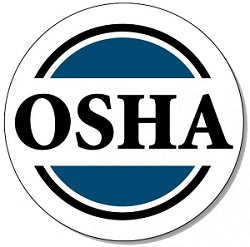Who Created OSHA, Why, and the Outcomes
To understand any company’s operating philosophy, you must understand their mission. “Congress created OSHA to assure safe and healthful conditions for working men and women by setting and enforcing standards and providing training, outreach, education, and compliance assistance.” We won’t belabor a long study of history. But OSHA formed for a reason. While many companies, past and present, do their best to ensure the safety of their employees, there also were, and still are, many that do not place worker safety in high regard. Given that one of the roles of government is to “promote the general welfare” of its citizens, something needed to be done to ensure that all companies were doing the “right thing” when it came to the safety and welfare of their workforce. With that purpose in mind, OSHA was formed and signed into law by President Richard Nixon under the Occupational Health and Safety Act of 1971. When OSHA establishes a new regulation, it seeks and receives a tremendous amount of input from the public via RFIs (Requests for Information) and announcements that a new regulation is pending. They consult both large and small businesses to ensure the regulation will not put undue burdens on small businesses and cause them to suffer financially or potentially close. The bottom line is that OSHA has a systematic process to try to balance the need for safety and health with the productivity of business. Within our industry, OSHA provides educational tools like the Powered Industrial Truck eTool to help businesses understand the dangers of lift trucks and how to ensure that each father, mother, sister and brother who operates one gets home safely each night. This site is packed full of information for the sole purpose of seeing that each person who operates a lift truck knows the dangers of the equipment and has guidance on how to operate it safely within the parameters of their work environment. The outcome cannot be debated. Since its inception, workplace fatalities and occupational injuries have dropped by 60%. In fact, in 1971, when OSHA was signed into law, workplace fatalities numbered about 14,000 per year. In 2009, even though the American workforce has doubled in size, the number of American deaths due to workplace injury had dropped to 4,400. OSHA has helped businesses accomplish this by creating best practices for any given job, sharing them with other companies through its education process, and enforcing them through inspections. We perform a tremendous amount of forklift operator training to meet OSHA requirements. When we engage a customer in training, we encourage them not to approach it as simply another “hoop government forces us to jump through.” While yes, we do recognize that it does place a burden on a business, and there’s no doubt that there have been times when OSHA has not gotten it completely right, we believe OSHA brings value to every American in the workplace. We have found that companies that provide comprehensive training programs have higher levels of employee satisfaction, leading to better productivity, better care for the equipment they operate, fewer accidents and injuries, and a healthier bottom line for the company. Now that’s a by-product of OSHA we can all live with! |






 Recently, we shared some information about the effects forty years of OSHA has had on industries. This led to a conversation about the real intents, effects and outcomes of OSHA on the American worker. We thought we would share some of the content of those discussions with you in order to bring a renewed perspective about the agency and what they do every day to ensure people like you, me and our children can go to work and be relatively confident that they will be protected from hazards seen, and sometimes unseen, in their workplace.
Recently, we shared some information about the effects forty years of OSHA has had on industries. This led to a conversation about the real intents, effects and outcomes of OSHA on the American worker. We thought we would share some of the content of those discussions with you in order to bring a renewed perspective about the agency and what they do every day to ensure people like you, me and our children can go to work and be relatively confident that they will be protected from hazards seen, and sometimes unseen, in their workplace.